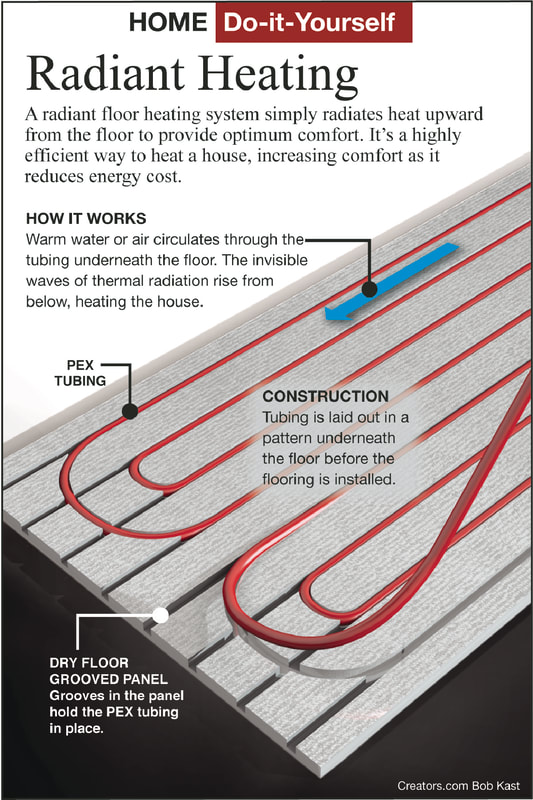
October 2, 2020
Dear James: We are remodeling a bedroom for my mother to live here. I would like a radiant floor-heating system under hardwood. Is a wet- or dry-type system best? —Johnny G.
Dear Johnny: Radiant floor-heating systems are some of the most efficient and comfortable warmth, especially for an older person. With the entire hardwood floor radiating heat up into the room, there are no drafts, and the room temperature stays very constant.
The warmth coming up from the floor makes a person feel warm all over, especially for older people who often have circulation problems and cold feet. Using a small room humidifier with it produces dust-free room air and little dust. With forced-air heating, the ductwork accumulates and distributes dust into the air.
This is especially true with an old, leaky duct system that can allow dust and mold spores to be drawn in through leaks in the basement or utility room and then carried to all the other rooms of the house. Large hot-water radiators or baseboard radiators are not as bad, but they do create air flow patterns that may carry dust.
A wet, radiant floor system is one in which the hot water cross-linked polyethylene, or PEX, tubing is embedded in a concrete or light gypsum floor. A dry floor generally uses special flooring panels with grooves to hold the PEX tubing in place. If you have access to the underside of the floor, the hot water tubing can be attached underneath the existing floor between the joists.
If you are planning to do some of the installation work yourself, a dry radiant floor is much easier to install. You can attempt a wet floor, but it can be difficult to make it smooth and even, unless you are experienced at working with concrete and cement.
Several companies make the dry-floor grooved panels specifically for this type of retrofit application. These panels create a solid base for the strip hardwood flooring you plan to use to finish the floor.
Before running out and buying these panels, have a contractor design the system for you. The amount of tubing needed for proper heating depends upon the size of the room, wall/ceiling insulation, windows, etc. Contractors do the same type of heat-loss analysis as they would do when sizing a new furnace.
Be sure to tell the contractor you are planning to install hardwood flooring over the radiant heating. This is important because you do not want the hardwood surface to get above about 85 degrees F. Higher temperatures can overly dry the wood over time. In order to keep the temperature this low, the contractor may specify more tubing with lower temperature water flowing through it.
Also have the contractor select and design the control system. A programmable type is best, particularly for a bedroom, which is used primarily at night. Keep in mind that it takes much longer for a radiant floor to heat up than it does when you turn up the thermostat on a forced air furnace.
Once the system is totally designed, you can install the PEX tubing into the grooves in the floor panels. Gun a generous bead of silicone caulk into the groove, and then snap the tubing into it. Sometimes, it helps to gently tap the tubing with a rubber mallet to ensure it is seated properly in the groove.
Send your questions to Here’s How, 6906 Royalgreen Dr., Cincinnati, OH 45244, or visit Dulley.com. To find out more about James Dulley and read features by other Creators Syndicate writers and cartoonists, visit the Creators Syndicate website at Creators.com. Copyright 2020 Creators.com





